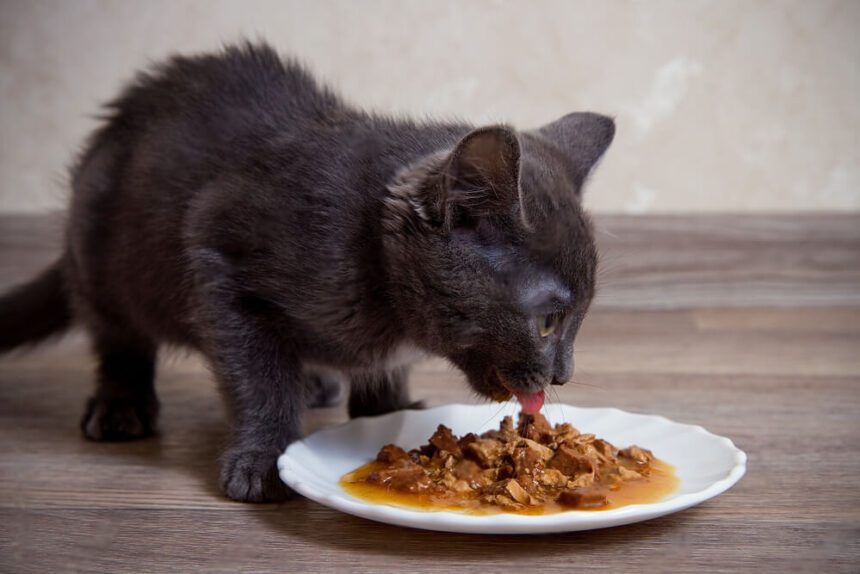So, you want to give your feline friend a special treat? Making homemade cat food gravy is an excellent way to do just that. Not only is it a tasty addition to their meals, but it also provides additional hydration and enhances the flavor of their food. Let’s dive into the world of cat food gravy and discover how to make cat food gravy at home.
Why Make Cat Food Gravy?
Cats can be picky eaters, and sometimes their dry food just doesn’t cut it. Adding gravy can make their meals more appealing and nutritious. Here are a few reasons why you might want to make cat food gravy:
Provides Hydration
Cats often don’t drink enough water, which can lead to dehydration and urinary issues. Gravy adds moisture to their diet, helping keep them hydrated.
Improves Appetite
If your cat is a fussy eater, a flavorful gravy can make their food more enticing, encouraging them to eat more.
Enhances Flavor
Cats have a keen sense of smell and taste. Adding gravy can enhance the flavor and aroma of their food, making it more enjoyable.
Homemade Cat Food Gravy Recipes
Creating homemade cat food gravy is easy and cost-effective. Plus, you have complete control over the ingredients, ensuring your cat gets a high-quality, nutritious meal. Here are a few vet-approved recipes to get you started.
Simple Chicken Gravy
This chicken gravy recipe is perfect for cats who love the taste of poultry.
Ingredients:
- Cup of chicken broth
- Tablespoon of cornstarch
- 1/4 cup of water
Directions:
Heat the chicken broth over medium heat in a small saucepan. In a separate bowl, whisk together the cornstarch and water until smooth. Slowly pour the cornstarch mixture into the saucepan with the chicken broth, whisking constantly. Continue to whisk the mixture until it thickens, which should take about 2-3 minutes. Remove from heat and allow the gravy to cool before serving.
Tuna Gravy
If your cat is a fan of seafood, this tuna gravy will be a hit.
Ingredients:
- Can of tuna, drained
- Cup of water
- Tablespoon of cornstarch
Directions:
In a blender or food processor, puree the tuna and water until smooth. Pour the tuna mixture into a small saucepan and heat over medium heat. In a separate bowl, whisk together the cornstarch and a small amount of water until smooth. Slowly pour the cornstarch mixture into the saucepan with the tuna, whisking constantly. Continue to whisk the mixture until it thickens, which should take about 2-3 minutes. Remove from heat and allow the gravy to cool before serving.
Beef Gravy
For cats who prefer the taste of beef, this gravy recipe is a must-try.
Ingredients:
- Cup of beef broth
- Tablespoon of cornstarch
- 1/4 cup of water
Directions:
Heat the beef broth over medium heat in a small saucepan. In a separate bowl, whisk together the cornstarch and water until smooth. Slowly pour the cornstarch mixture into the saucepan with the beef broth, whisking constantly. Continue to whisk the mixture until it thickens, which should take about 2-3 minutes. Remove from heat and allow the gravy to cool before serving.
Tips For Making The Best Cat Food Gravy
- Experiment with Different Flavorings: Cats have their own preferences. Try different broths and meats to see what your cat likes best.
- Use Fresh Ingredients: Fresh ingredients are not only healthier but also taste better.
- Achieve the Right Consistency: Make sure to use the appropriate ratio of liquid to thickener to get the desired gravy consistency.
- Storage: Store leftover gravy in an airtight container in the fridge for up to three days.
Benefits of Homemade Cat Food Gravy
Making your own cat food gravy comes with several advantages:
Cost-Effective
Store-bought gravy can be pricey. Making your own is a budget-friendly alternative.
Control Over Ingredients
When you make gravy at home, you know exactly what goes into it. This means you can avoid unnecessary additives or fillers and ensure your cat is getting a high-quality, nutritious meal.
Customization
You can experiment with different flavors and ingredients to find the perfect combination that your cat loves.
Frequently Asked Questions
Can I make cat food gravy with dry cat food?
No, it’s not recommended to make cat food gravy with dry cat food. Dry cat food doesn’t have enough moisture to create a gravy-like consistency.
Can I use flour instead of cornstarch?
Yes, you can use flour instead of cornstarch. However, cornstarch is recommended because it produces a smoother texture.
Can I store the leftover cat food gravy?
Yes, you can store leftover cat food gravy in an airtight container in the fridge for up to three days.
Can I freeze cat food gravy?
Yes, you can freeze cat food gravy for up to three months. However, it’s best to make a fresh batch instead of freezing leftovers.
Is there wet cat food that is just gravy?
Yes, some wet cat food brands contain gravy without solid foods. Be sure to check the label before purchasing to ensure it meets your cat’s dietary needs.
What is the nutritional content of gravy for cats?
The nutritional content of gravy for cats depends on the ingredients used. Generally, it includes water, proteins, and sometimes fats.
Why is my cat only eating gravy?
Cats might prefer gravy due to its texture and flavor. If your cat is only eating gravy, it could indicate an underlying health issue. Consult your vet for advice.
Is cat food in jelly or gravy better?
Both options have their benefits. Gravy adds moisture and flavor, while jelly can be easier for some cats to digest. Choose based on your cat’s preference and nutritional needs.
Can cats eat chicken and gravy?
Yes, cats can eat chicken and gravy. Chicken is a great source of protein, and gravy adds extra moisture and flavor to their meal.
Conclusion
Making homemade cat food gravy is a simple and cost-effective way to enhance your cat’s meals. With just a few basic ingredients and some creativity, you can create a variety of gravies that your cat will love. So, why not give it a try? Your feline friend will thank you for it.
Remember, always consult your vet before making any significant changes to your cat’s diet. Happy cooking!



